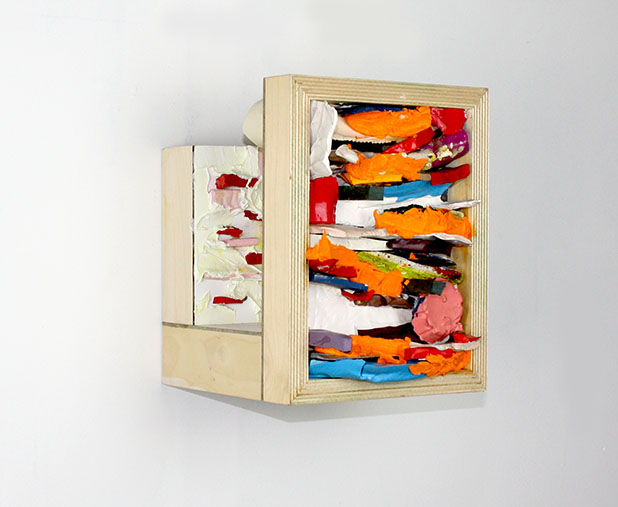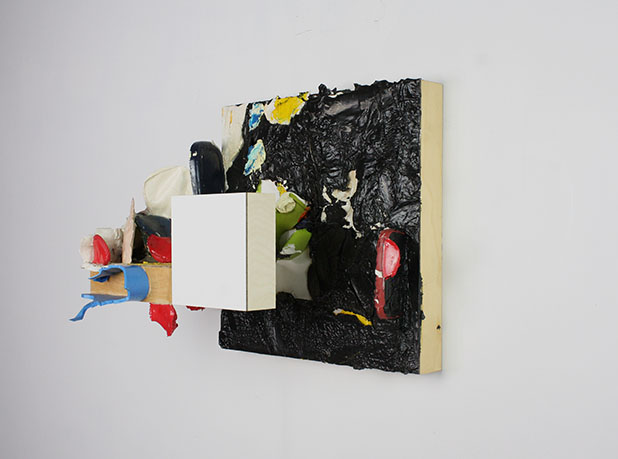The art architects make we expect to mirror their architectural aesthetic, if not extend it seamlessly. It is a modernist trope — going back to the Baroque, in fact — that images and objects, functional and otherwise, further distinguish a notable space by integrating its character. Christopher Mercier, however, carries his day job over into his handiwork by building, literally and figuratively, on the process and substance of buildings themselves — or, if you would, building itself. What Mercier’s architectural designs look like bears little on what his art objects look like; his art objects look a lot like architecture, just not necessarily his.
Mercier delights as an artist in the forms and materials of construction. Many of his pieces, notably the most sculptural, seem not so much composed as decomposed, ripped from the guts of some industrial space or funky attic corner, their studs and lathe marks not only evident but crucial to the overall (visual) structure, remnants of roofs and staircases imprinted on the ensembles. Some works — all are wall-hung (certainly in this exhibition) — are more overtly referential than others, and a few, while still dependent on latex, enamel, bolts, and other building elements, abstract themselves enough to suggest more Rauschenberg than tract house. (Indeed, the late artist’s Combines clearly give Mercier license and provide inspiration, as do other modernist art-architecture fusions such as Kurt Schwitters’ Merzbau.)
It is this sense of visual poetry drawn from the mundane world, rather than any refined sense of architectural “personality,” that distinguishes Mercier’s art. It allows the optical vividness and sensuality of quotidian shapes and knockabout stuff to drive the thinking here — importantly, leaving Mercier room for improvisation in even his largest and most carefully balanced compositions. That sense of adventure, of unpredictable outcome, lingers in the work.
If you think about it, Mercier’s approach is distinctively Californian, sourced in the artistic investigation of industrial materials and their effects that gave us Finish/fetish in the 1960s and Material Abstraction a decade later. Furthermore, the thematic and formal recurrence in local photography — especially the sensual deadpan of the “New Topographics,” also a phenomenon of the ‘70s — of exposed, vandalized, and otherwise transformed structures directly prefigures what Mercier achieves here. But he is not simply reviving artistic inquiries four decades old; he is bringing them to a kind of logical fruition, bigger, bolder, more complex than his forerunners’, perhaps because he is not freighted as they were by Minimalist admonitions. Mercier’s art is gloriously expansive and heterogenous, even in its smaller manifestations and all the references to everyday dwelling construction allow the Pop sensibility to temper the Minimalist.
Mercier’s art plays with architecture, formally and socially as well as aesthetically, but in the end, it does not rely on architecture for its success. It relies on the artist’s own stylistic impulses, seemingly acting almost as a vacation from architecture rather than any homage or obeisance to it. Still, there is enough visual and structural space for you to imagine living in one of these things as well as with it. Just don’t expect the contractor to show up.



